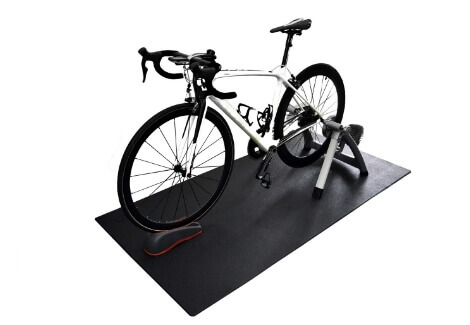Because PVC yoga mats are low in price, highly durable, easy to clean, and suitable for mass production, they are the most ideal choice for beginners. However, PVC is less eco-friendly and may contain plasticizers, making it a less environmentally friendly option.
If you’re looking for a more eco-friendly yet affordable mat, PER mats are a good alternative.
Understanding PVC and PER Materials
A Comparative Overview of Versatile and Eco-Friendly Solutions
In the world of manufacturing and product development, selecting the right material is crucial to achieving the desired balance between cost, durability, and environmental impact. Two widely used materials in various industries are PVC and PER. This blog will explore the characteristics of each material, their differences, and their applications.
What is PVC Material?
PVC, or Polyvinyl Chloride, is one of the most commonly used and affordable synthetic plastic polymers in the world. Known for its durability, flexibility, and low cost, PVC is a versatile material with a wide range of applications. Its inherent properties make it suitable for everything from construction materials to household products.
What is PER Material?
PER® is an innovative and environmentally friendly material that has been developed as an evolution of PVC. While retaining the durability and flexibility of PVC, PER® also offers significant environmental and health advantages. During the manufacturing process of PER®, harmful substances typically found in PVC are removed, resulting in a material that is safer and more eco-conscious. To ensure that PER® products maintain the same functionality and appearance as those made from PVC, the essential properties of PVC are preserved in the PER® formulation.
Key Differences Between PVC and PER
The most notable difference between PVC and PER is that PER has been certified by OEKO-TEX Standard 100, a global standard that verifies the safety of textiles for human use. This certification means that PER is a food-grade safe material, making it suitable for products that come into direct contact with sensitive skin, including that of infants.
Advantages of PVC and PER Products
PVC Advantages:
- Affordability: PVC is an economical material, making it accessible for a wide range of applications.
- Durability: PVC is highly durable and can withstand various environmental conditions, making it a long-lasting choice for many products.
- Ease of Maintenance: PVC products are easy to clean and maintain, contributing to their widespread use.
- Versatility: Suitable for people of all skill levels and can be used in a wide range of applications.
PER Advantages:
- Eco-Friendly: PER is an environmentally conscious alternative to PVC, free from harmful substances typically found in PVC.
- Safety: With its OEKO-TEX Standard 100 certification, PER is safe for use in products that come into contact with skin, including those used by infants.
- Similar Functionality: PER maintains the same durability, flexibility, and appearance as PVC, offering the same performance benefits while being safer and more sustainable.
Applications of PVC and PER
Both PVC and PER are used in a variety of products, particularly in the fitness and home goods industries.
Common applications include:
- Yoga Mats: Both PVC and PER are used to create yoga mats that are durable, slip-resistant, and easy to clean.
- Machine Mats: These mats, often placed under exercise equipment or heavy machinery, benefit from the durability and flexibility of PVC and PER.
- Anti-Slip Mats: Ideal for use in bathrooms or kitchens, these mats provide safety and comfort.
- Table Mats: Used in dining areas, these mats are easy to clean and protect surfaces from spills and heat.
- Foldable Mats: Common in gyms and homes, these mats are versatile and portable, offering convenience without sacrificing performance.
Conclusion
PVC and PER materials both offer unique benefits, making them valuable in a variety of applications. While PVC remains a popular choice due to its affordability and durability, PER provides a more eco-friendly and health-conscious alternative without compromising on performance. As environmental awareness continues to grow, materials like PER are becoming increasingly important in the production of safe and sustainable products. Whether you prioritize cost-effectiveness or eco-friendliness, both PVC and PER provide reliable solutions for a wide range of needs.



